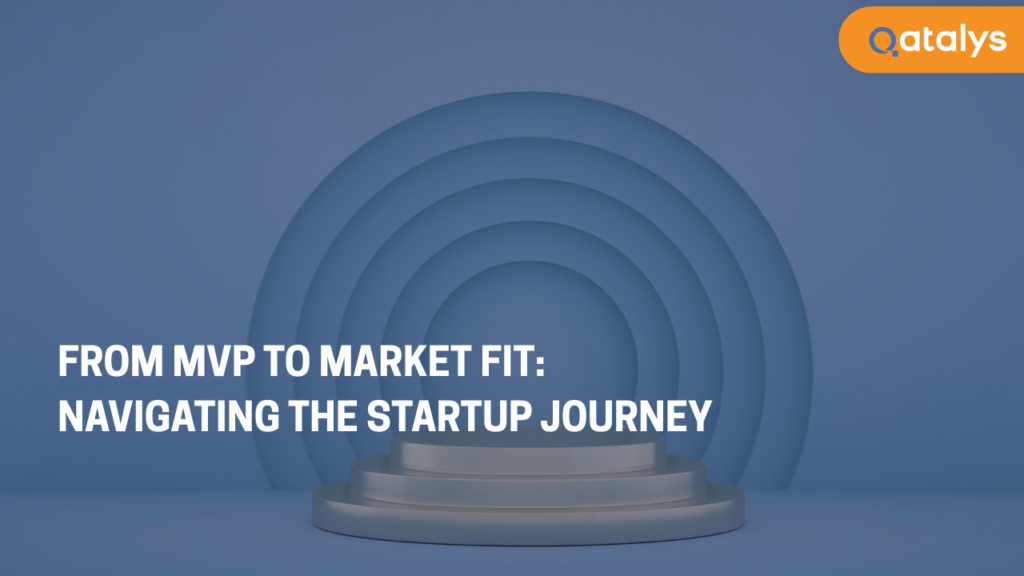Think you need a full-stack developer or a CTO co-founder to start a tech company? Think again.
Today, more founders than ever are launching successful startups without writing a single line of code – and some are securing funding before hiring their first engineer.
Thanks to the rise of no-code tools, freelance developer networks, and productized tech services, launching a startup is now less about knowing how to build software and more about understanding your market and solving real problems.
If you’ve got a strong idea, customer insight, and execution mindset – you don’t need to be technical to build something fundable.
And while some founders piece it together with freelancers and no-code tools, others work with venture studios like Qatalys that bring tech, capital, and execution under one roof.
In this blog, we’ll break down how to validate your idea, build your MVP, find the right tech talent, and pitch to investors – even if you can’t code a thing.
Validating Your Startup Idea Without Technical Expertise
Before you worry about how to build your product, make sure it’s something worth building.
Validation is the most important first step – and it doesn’t require writing code. As a non-technical founder, your job is to prove that:
- The problem is real
- People are actively seeking a solution
- They’re willing to pay (or change behavior) for it
How to Validate Without Tech:
Talk to Potential Users
- Interview 10–20 people from your target audience
- Ask about their workflows, pain points, and what they’re currently using
- Don’t pitch – listen for recurring problems and workarounds
Create a Simple Landing Page
- Use tools like Carrd, Webflow, or Notion
- Explain the value proposition
- Include a “Join Waitlist” or “Get Early Access” form to test interest
Run a Smoke Test
- Launch a basic ad campaign (e.g., on Instagram or Google)
- See how many people click or sign up based on your pitch
- Track metrics like cost-per-click and conversion rate
Use Google Trends and Keyword Tools
- Validate demand through search volume
- Explore Reddit, Quora, and forums to see how people discuss the problem
You don’t need a prototype to validate an idea. You need a clear problem, a defined audience, and evidence they care.
If you’re not sure where to start – or want expert support validating your concept – Qatalys helps founders pressure-test ideas with real users, fast
Building Your MVP Without a Tech Team
Once you’ve validated your idea, the next step is building a product people can actually use – and give feedback on. But here’s the good news:
You don’t need a full tech team or a technical co-founder to launch your MVP.
Thanks to the rise of no-code and low-code tools, you can build a functional, user-ready version of your product using drag-and-drop interfaces – saving both time and money.
Best No-Code Tools for MVPs
- Bubble – Build full web apps with workflows, user authentication, and databases
- Webflow – Create stunning marketing sites or front-end pages
- Adalo / Glide – Great for mobile app MVPs
- Airtable / Notion – Use as lightweight databases or backends
- Zapier / Make (Integromat) – Automate tasks and integrate tools without code
Tips for Building a Strong MVP
- Focus only on the core feature that solves your user’s main problem
- Don’t overbuild – your goal is to learn, not impress
- Use templates and UI kits to speed things up
- Get real users to test it early and often
Real-World Example
- Comet (a freelance developer platform) built and validated their MVP using Typeform, Trello, and Zapier – before writing a single line of code
- They later scaled to $13M+ in funding
You’re not building your final product – you’re building a testable version that proves you’re on the right track.
Outsourcing Development: Finding the Right Partners
If your MVP outgrows no-code tools – or your vision requires custom tech – it’s time to bring in outside help. The key is to treat development like a business partnership, not just a transaction.
You don’t need to hire a CTO from day one, but you do need:
- A clear product vision
- A reliable, experienced development team
- Communication and trust
Where to Find Developers or Agencies
- Freelance Platforms: Upwork, Toptal, Lemon.io (vetted tech talent)
- Tech Agencies: Use platforms like Clutch or GoodFirms to find vetted firms with startup experience
- LinkedIn & Founder Networks: Ask for referrals from other founders – real-world feedback is gold
Alternatively, if you prefer one experienced partner who handles product strategy, tech execution, and scale-readiness, working with a venture studio like Qatalys can reduce complexity from day one.
How to Vet Development Partners
- Look at past projects – especially in your industry or product type
- Ask how they handle MVPs, scope changes, and timelines
- Check if they understand startup urgency and iteration cycles
- Do a paid test project before committing long-term
Set Clear Expectations Upfront
- Define deliverables, deadlines, and tools (e.g., Figma, Trello, Slack)
- Clarify IP ownership and code access
- Avoid scope creep – prioritize speed to market over perfection
A great outsourced partner won’t just build what you say – they’ll help you build what your users need.
With the right team, you can launch quickly, test effectively, and scale with confidence – without hiring a full-time engineer.
Building a Go-to-Market Strategy
Even the best MVP won’t go anywhere if no one sees it. A strong go-to-market (GTM) strategy helps you reach your early users, learn from them, and build momentum before raising funds or scaling.
You don’t need a marketing agency – just clarity, speed, and consistency.
Key GTM Components for Early-Stage Founders
Define Your Target Audience
- Be specific: industry, role, pain point
- Start with 1–2 tightly defined user segments – broad is broken
Launch on Lean Channels
- Product Hunt: Ideal for tech products and indie tools
- LinkedIn or Twitter: Share your story, behind-the-scenes, and customer feedback
- Communities: Reddit, Slack groups, Indie Hackers, Facebook groups – wherever your users hang out
Build in Public
- Share progress, challenges, and updates as you go
- Builds credibility and draws in early supporters
Collect Emails Early
- Use landing pages, lead magnets, or early access forms
- Start building your user base before launch
Ask for Feedback Constantly
- Run interviews, surveys, or feedback forms post-signup
- Use this to refine onboarding, messaging, and product features
Early GTM Is About Learning, Not Just Selling
The goal is not to “go viral” right away – it’s to find the right early users, understand their needs, and improve based on real data.
Startups that win don’t just build fast – they learn fast and adjust faster.
Securing Funding Without a Tech Co-Founder
While many investors look for strong technical teams, it’s absolutely possible to raise capital without a technical co-founder – if you prove clarity, traction, and execution.
Your job as a founder isn’t to build the code. It’s to prove:
- You understand the market
- You can validate demand
- You can lead execution – by assembling the right team
What Investors Want to See Instead of a CTO
Validated Problem & Solution
- Clear pain point with real users
- Evidence of early engagement, signups, or pilots
MVP or Prototype
- Even a no-code version shows initiative and product direction
- Screenshots + live walkthrough > slide deck alone
Early Go-to-Market Wins
- Waitlist signups, pre-orders, or strong interest from a niche audience
- Partnerships, testimonials, or influencer backing
A Plan to Build the Tech Team
- Show that you’re actively working with freelance devs or agencies
- Be clear about your hiring roadmap post-funding
- Demonstrate leadership in managing outsourced development
Bonus: Angel Investors Often Bet on Hustle Over Headcount
Many early-stage checks are written not because the tech is perfect – but because you’ve proven you can move fast, learn quickly, and get results.
Conclusion: You Don’t Need to Code to Build What Matters
The startup world is changing – and so are the rules.
You don’t need to know Python, React, or how to scale a backend to build a real, fundable company. What you need is:
- A clear problem worth solving
- A willingness to test, iterate, and learn
- The resourcefulness to assemble the right tools and people
- The vision to lead – even if you don’t write the code
From validating your idea and launching an MVP to attracting users and investors, there’s a proven path for non-technical founders to succeed.
You’re not behind because you can’t code. You’re ahead if you can lead.
Need a Partner to Help You Build Without a Tech Team?
At Qatalys Venture Studio, we help non-technical founders bring their vision to life – from no-code MVPs to fully engineered, scalable products. We provide funding, tech, and strategy so you can focus on what matters most: building a business that works.
Talk to us today to see how we can help you launch without a tech team – and grow with confidence.








